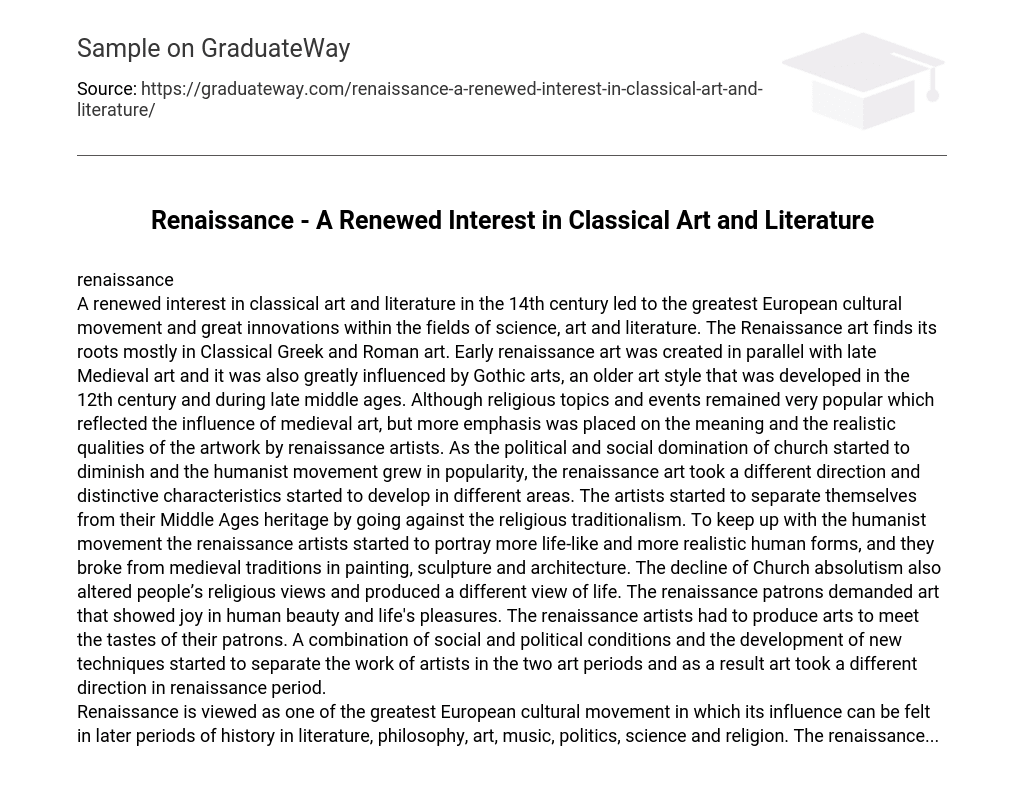renaissance A renewed interest in classical art and literature in the 14th century led to the greatest European cultural movement and great innovations within the fields of science, art and literature. The Renaissance art finds its roots mostly in Classical Greek and Roman art. Early renaissance art was created in parallel with late Medieval art and it was also greatly influenced by Gothic arts, an older art style that was developed in the 12th century and during late middle ages. Although religious topics and events remained very popular which reflected the influence of medieval art, but more emphasis was placed on the meaning and the realistic qualities of the artwork by renaissance artists. As the political and social domination of church started to diminish and the humanist movement grew in popularity, the renaissance art took a different direction and distinctive characteristics started to develop in different areas.
The artists started to separate themselves from their Middle Ages heritage by going against the religious traditionalism. To keep up with the humanist movement the renaissance artists started to portray more life-like and more realistic human forms, and they broke from medieval traditions in painting, sculpture and architecture. The decline of Church absolutism also altered people’s religious views and produced a different view of life. The renaissance patrons demanded art that showed joy in human beauty and life’s pleasures. The renaissance artists had to produce arts to meet the tastes of their patrons. A combination of social and political conditions and the development of new techniques started to separate the work of artists in the two art periods and as a result art took a different direction in renaissance period.
Renaissance is viewed as one of the greatest European cultural movement in which its influence can be felt in later periods of history in literature, philosophy, art, music, politics, science and religion. The renaissance…





